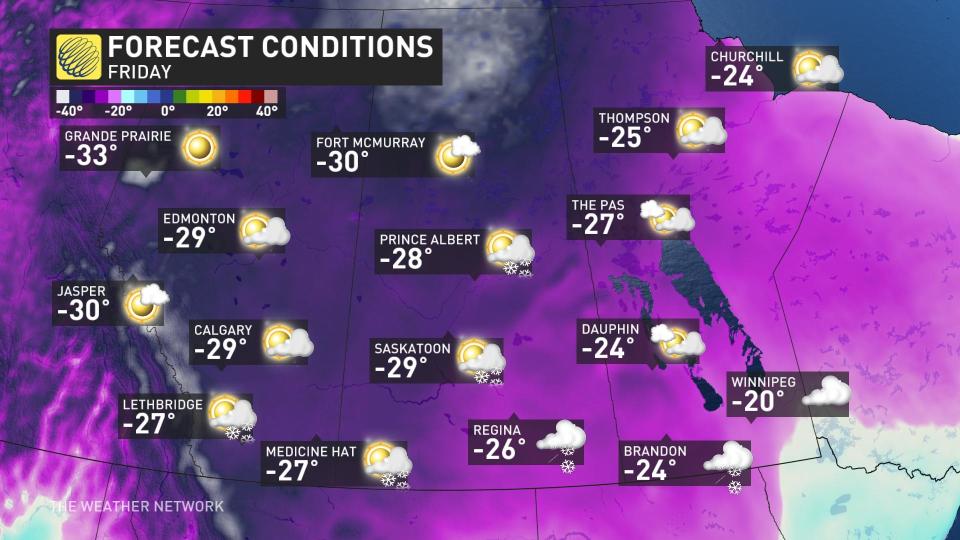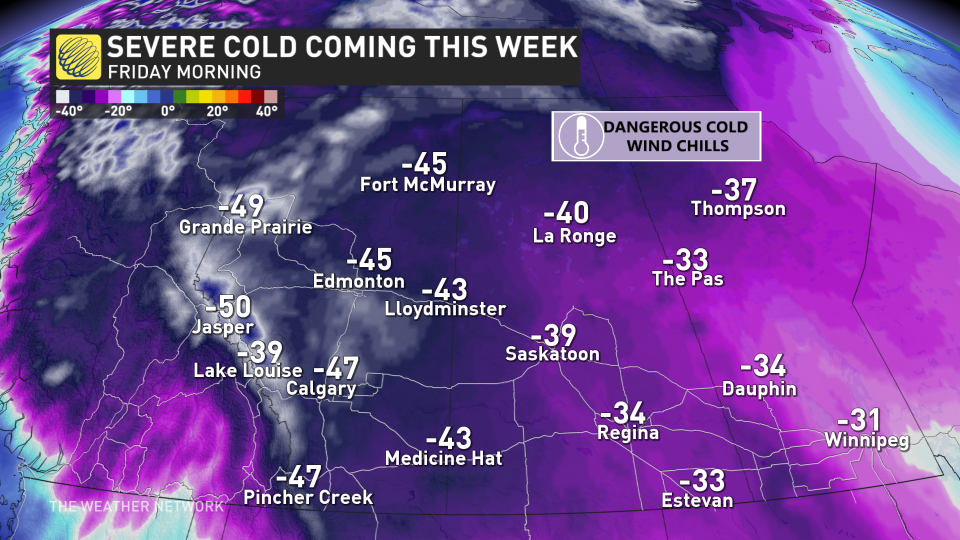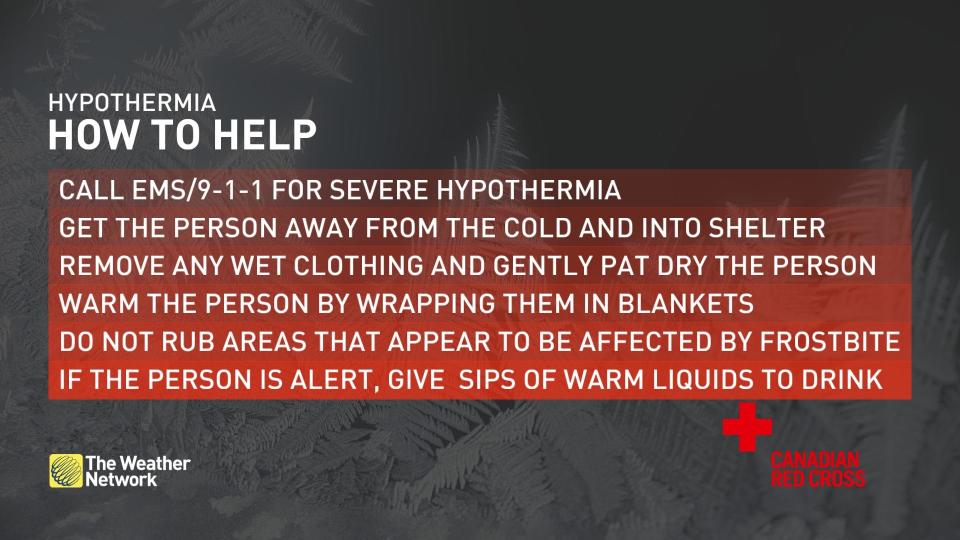Dangerously cold Arctic air spreads over the Prairies with wind chills near -50
Winter is certainly making its presence known across the country this week, as rounds of storms hit Eastern Canada, and a dangerous chill grips the west.
Fluffy blowing snow will continue to move across parts of the Prairies through Wednesday, ahead of an extreme cold snap that could see temperatures in the -30's to end off the week. A rare feat in an El Niño winter to say the least.
MUST SEE: Winter to finally show up in January as El Niño bested by polar vortex
__Wednesday: Clipper system continues to spread snow __
A clipper system from Alberta will spread across Manitoba on Wednesday, bringing periods of heavy snow that will persist into Thursday. The heaviest amounts appear to be in the Dauphin area, where as much as 25 cm will be possible by the time all is said and done. Folks in Brandon could see 15-20 cm, while 5-10 cm is forecast for Winnipeg.

Snowfall will linger over The Pas and Dauphin through the day and slowly sink further south.
The clipper will continue to take advantage of the arctic air oozing south, creating heavy snow in the fluffy variety. This means it will easily blow around and pile up along the roadways leading to some hazardous travel.
SEE ALSO: What POP really means in a weather forecast
Extreme cold takes hold for Thursday and beyond
Once the system clears out on Thursday morning, temperatures are going to drop dramatically, reaching dangerously cold levels across the Prairie provinces through the weekend. It's important to exercise caution and take the necessary precautions to stay safe.
WATCH: Snow and dangerously cold temperatures headed for Alberta
By Friday, daytime highs on the Prairies will struggle to go above -30°C, a true rarity in the 21st century. The polar vortex will drive this rapid change in wintry fortunes across the western half of Canada.
MUST SEE: What is the polar vortex? How it’s responsible for dangerous cold

Edmonton airport has recorded just five days in the 21st century below -30°C as daytime highs –– the last time on Dec. 21, 2022.
For Calgary, it’s even more rare. Just once since the year 2000 has it had a daytime high of -30°C, recorded on Jan. 27, 2004. The 20th century had 56 instances of a daytime high at or below -30°C, for reference.
RELATED: The chilling truth behind wind chill and its impact on our well-being
On top of the cold temperatures, winds will be breezy from Wednesday through Friday, which will also create dangerous wind chill conditions.
Wind gusts of 20-30 km/h Friday morning will cause wind chill values into the mid -40s. Extreme cold warnings are already in effect for parts of the region.

Temperatures are forecast to remain frigid through the weekend, and slowly moderate into next week.
Be Aware of Cold-related Emergencies
When a person is exposed to cold temperatures it may result in a decrease in body temperature, which is called a cold-related emergency.

It is important for everyone enjoying the outdoors to know how to recognize when someone has been exposed to cold for too long, prevent cold-related emergencies, and be able to provide help when needed.
Prevention:
Cover your head and trunk by wearing a hat and layers of tightly woven fabrics such as wool or synthetics.
Cover up exposed areas such as your fingers, cheeks, ears, and nose.
If your clothes get wet when you are in the cold, change into dry clothes as soon as possible.
Drink plenty of warm fluids to help your body stay warm and hydrated, avoid caffeine and alcohol.
Eat high calorie food and drinks regularly as the body converts food to energy which heats the body.
Dress in layers so that you can adjust to changes as you heat up or cool off.
Bring additional warm clothing when going out for extended periods or in case of emergency.
Don’t wear tight fitting clothing or footwear that may impair circulation.
Seek shelter from the wind if you are getting cold, even if it is only behind a tree, hill, embankment, or other landscape feature.
You can find more information on how to recognize when someone is suffering from a cold-related emergency, here.
WATCH: Know the signs of frostbite and hypothermia this winter
Stay with The Weather Network for the latest on conditions across the Prairies.


